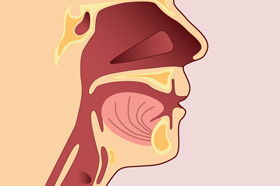Higher radiation in fewer sessions could make care access for head and neck cancer more feasible
by
John R. Fischer, Senior Reporter | October 05, 2023

Delivering higher doses of radiation in fewer sessions can be just as effective as the standard protocol for treating head and neck cancers with radiotherapy.
In a study spanning 10 middle- and low-income countries, researchers say that delivering higher radiation doses for squamous cell head and neck tumors in fewer sessions can be just as effective at controlling cancer as standard practice, without increasing side effects.
Lead author Søren Bentzen, a professor of radiation oncology and director of the division of biostatistics and bioinformatics in the department of epidemiology and public health at the University of Maryland School of Medicine, and his colleagues presented their findings for the Phase III randomized trial at the American Society for Radiation Oncology (ASTRO) Annual Meeting.
According to them, head and neck cancers, which have historically been linked to tobacco and alcohol use, including secondhand smoke and chewing tobacco, are disproportionately high and growing in low- and middle-income countries. Rather than treating these conditions with courses of radiation in 33 sessions, they found in the HYPNO (HYPo- versus NOrmo-fractionated accelerated radiotherapy) trial that 20 sessions with higher doses provided roughly the same level of locoregional tumor control and late-term side effects three years after treatment.
This, they say, allows patients to travel less and not spend as much time away for treatment. It also may increase patient throughput time in countries with few radiotherapy facilities available.
“This is a trial that directly informs how you can effectively deliver radiation therapy to patients in a resource-scarce environment,” said Bentzen.
For their study, the researchers assessed 792 patients at 12 health centers in Uruguay, Brazil, Argentina, Cuba, South Africa, India, Pakistan, Thailand, Indonesia, and the Philippines. All had locally advanced head and neck cancers in a variety of sites, the most common being the oropharynx (50.5%). Most had a history of tobacco smoking and chewing (87%), and the majority were diagnosed at stage three or four (73%). Close to half (49%) had cancer that had spread to the lymph nodes.
Patients were treated either in 33 fractions (66 Gy, six fractions per week for 5.5 weeks) or 20 fractions (55 Gy, five fractions per week for 4 weeks). Most also received chemotherapy. In addition to similar levels of tumor control (test for non-inferiority within a 10% margin for both), overall survival and progression-free survival rates were not significantly different (54.1% hypofractionated vs. 55.5% conventional).
Bentzen and his team are conducting subgroup analyses to see if the accelerated treatment protocol is effective among a variety of patient types, with initial findings suggesting it will be.
The study was sponsored by the International Atomic Energy Agency in Vienna.
|
|
|
You Must Be Logged In To Post A Comment
|
